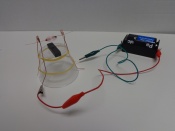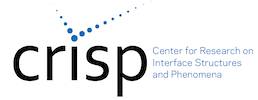Our kits are currently being reviewed and updated by a team of collaborative, innovative and interdisciplinary educators who wish to enhance the educational opportunities for students. These dedicated teachers are members of CRISP Collaborative Science for All (CCSA) as well as local educators.
Click to see the SCSU CRISP Module Template used by CCSA for improving and updating the CRISP demos and kits. Each kit page offers a CRISP developed teacher module and CRISP aligned standards (both NGSS and CCSS)
Kit Request form

Flick a switch and get instant power—how our ancestors would have loved electric motors! You can find them in everything from electric trains to remote-controlled cars—and you might be surprised how common they are. How many electric motors are there in the room with you right now? There are probably two in your computer for starters, one spinning your hard drive around and another one powering the cooling fan. If you’re sitting in a bedroom, you’ll find motors in hair dryers and many toys; in the bathroom, they’re in extractor fans, and electric shavers; in the kitchen, motors are in just about every appliance from clothes washing machines and dishwashers to coffee grinders, microwaves, and electric can openers. Electric motors have proved themselves to be among the greatest inventions of all time. Even small electric motors are surprisingly heavy. That’s because they’re packed with tightly wound copper and heavy magnets. Let’s pull some apart and find out how they work!
Developed by CRISP – adapted from Explain That Stuff by http://www.explainthatstuff.com/electricmotors.html
Subject(s):
Electricity, Magnetism, Mechanics
Objectives:
Students will be able to
- Understand a simple circuit
- Describe the relationship between current and magnetism.
Materials in this kit:
*Each kit contains enough materials for 10 setups
- Mini Electric Motor (1.5 – 4.5V, .6A)
- D Battery
- Battery Holder
- Bulb holder
- Mini light bulb
- Bare copper wire
- Transformer wire
- Rectangular magnet
- Plastic Cup
- Black insulated wire
- Rubber Bands
Suggestions for the Teacher:
PLEASE NOTE: when not testing the design, please have students disconnect the battery as they will drain very quickly.
We have several photos that might help troubleshoot any issues electric-motors-hints
When dealing with the internal motor, if the student is having difficulty getting the motor to spin using the magnet check the following:
- the bare copper wire is touching the metal prong of the motor
- make sure the motor is touching the correct charge (try flipping it around)
- check to make sure the battery is properly connected as sometimes they come loose
- try adjusting the wire “stand” that is attached to the cup, if one is lower than the other the off balance will prevent it from rotating
When dealing with the red transformer wire (looped), if the student is having difficulty getting it to spin using the magnet check the following:
- try sanding the ends of the red wire, there is a thin coating on it that will prevent the current from traveling through
- check the battery connections
- try adjusting the wire “stand” that is attached to the cup, if one is lower than the other the off balance will prevent it from spinning
Safety:
Additional Resources:
Electric Motors teacher module
Electric Motors CRISP aligned standards
Electric Motors Lab
Intro to electricity
electric-motors
STEM Careers:
Electrical Engineer
Materials Scientist
Researcher
Electrician
Engineer
Computer hardware Engineer
Electrical Engineering Technologists
Electrical and Electronic Engineering Technicians
Electro-Mechanical Technicians
Nanosystems Engineers
Standards:
PS2.B: Types of Interactions
Newton’s law of universal gravitation and Coulomb’s law provide the mathematical models to describe and predict the effects of gravitational and electrostatic forces between distant objects. (HS-PS2-4)
Forces at a distance are explained by fields (gravitational, electric, and magnetic) permeating space that can transfer energy through space. Magnets or electric currents cause magnetic fields; electric charges or changing magnetic fields cause electric fields.
PS3.A: Definitions of Energy
“Electrical energy” may mean energy stored in a battery or energy transmitted by electric currents.(secondary)
CC 3 - Cause and Effect
Empirical evidence is required to differentiate between cause and correlation and make claims about specific causes and effects.
SEP 4 - Planning and Carrying out Investigations
Plan and conduct an investigation individually and collaboratively to produce data to serve as the basis for evidence, and in the design: decide on types, how much, and accuracy of data needed to produce reliable measurements and consider limitations on the precision of the data (e.g., number of trials, cost, risk, time), and refine the design accordingly.
